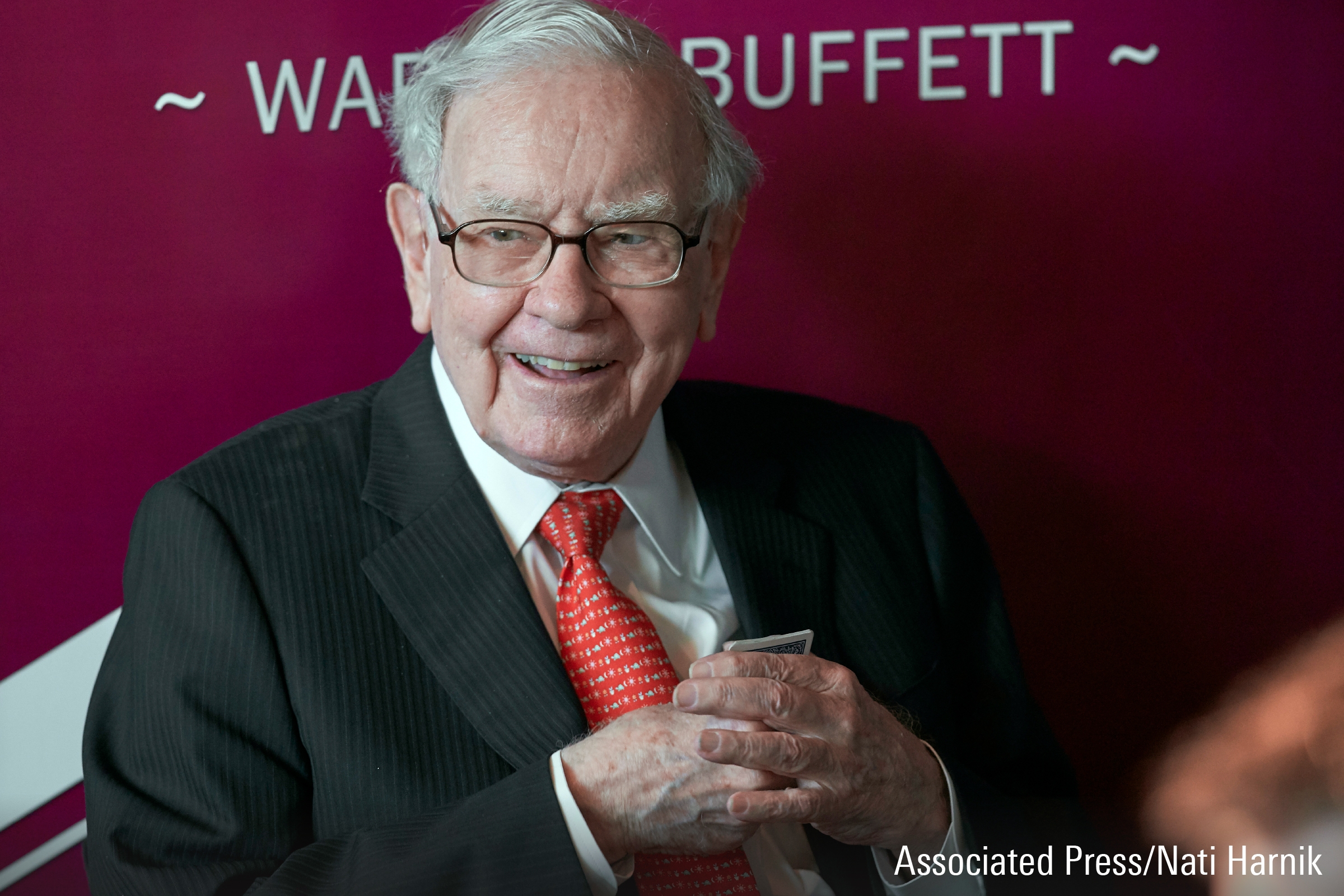SPY vs. VOO: Which of Warren Buffett’s ETFs Is Better?
Both of the exchange-traded funds in Berkshire Hathaway’s portfolio track the S&P 500. Only one earns Morningstar’s top rating.

Noted investor Warren Buffett’s Berkshire Hathaway BRK.A BRK.B recently released its 13F for the fourth quarter of 2023. The report suggests that Buffett’s company did not buy many stocks last quarter, adding no new names and increasing its stake in only three companies.
“That’s not surprising, given that stocks skyrocketed during the period: The Morningstar US Market Index was up about 12% during the fourth quarter,” wrote Morningstar investment specialist Susan Dziubinski.
What did Buffett buy?
The SEC requires all institutions with $100 million or more in assets to disclose their equity holdings quarterly in a 13F report. However, Morningstar strategist Greggory Warren, who covers Berkshire, points out that this may not be the final list of stocks that the company bought.
“The SEC occasionally permits confidential treatment for new stock purchases by large portfolio managers, exempting them required disclosure in quarterly 13F filings when ‘such action is necessary or appropriate in the public interest and for the protection of investors or to maintain fair and orderly markets,’” Warren explains. “Berkshire received an exemption last quarter (much as it has at different times in the past) as well as for the third quarter of 2023, and now its biggest stock purchase during the third and fourth quarters remains a mystery to investors. Eventually, the company will disclose the stock (or stocks) that they have been buying.”
Warren Buffett’s Berkshire Owns 2 ETFs: SPY and VOO
Regardless of what Berkshire buys or sells, one of the cheapest ways for an investor to diversify is with an exchange-traded fund. If you want to buy what Buffett has at Berkshire, he has two ETFs listed on the 13F:
Both funds passively track the S&P 500. Morningstar analyst Mo’ath Almahasneh, who covers both ETFs, says the bedrock of the strategy they follow is market-cap-weighting.
“Market-cap-weighting harnesses the market’s collective wisdom of the relative value of each holding with the added benefit of low turnover and associated trading costs,” Almahasneh says. “It’s a sensible approach because the market tends to do a good job pricing large-cap stocks.”
Which ETF Is Better?
The Morningstar Medalist Rating for funds can help answer this.
The Medalist Rating is the summary expression of our forward-looking analysis of investment strategies. The rating is expressed on a five-tier scale running from Gold to Negative. The top three ratings of Gold, Silver, and Bronze indicate that our analysts expect the investment vehicle to outperform on a risk-adjusted basis relative to its Morningstar Category index or category median over the long term.
Here are the key metrics for SPY and VOO:
SPDR S&P 500 ETF Trust
- Morningstar Medalist Rating: Silver
- Morningstar Rating: 4 stars
- Prospectus Net Expense Ratio: 0.09%
Vanguard S&P 500 ETF
- Morningstar Medalist Rating: Gold
- Morningstar Rating: 5 stars
- Prospectus Net Expense Ratio: 0.03%
Overall Winner: Vanguard S&P 500 ETF
Both SPY and VOO are highly rated. “The funds accurately represent the large-cap opportunity set while charging rock-bottom fees, a recipe for success over the long run,” says Almahasneh.
Though Almahasneh favors the market-cap-weighting approach, he acknowledges the potential risks in the strategy.
“When few richly valued companies or sectors power most of the market gains, market-cap-weighting may expose the strategy to stock- or sector-level concentration risk, as was the case at year-end 2023,” he says. “As of November 2023, the top 10 holdings made up the largest portion of the index (31%) in several decades, and the 30% allocation to technology stocks was the highest since the dot-com bubble. But this is not a fault in design. The S&P 500 simply reflects the market composition. In the long run, the funds’ broad diversification, low turnover, and low fees outweigh these risks.”
While the two ETFs follow the same strategy, they earn different ratings.
VOO earns a top rating of Gold, while SPY earns the next best rating of Silver. Almahasneh says the reason is fees. VOO charges 0.03%, while SPY charges 0.09%. With all else equal, the fund with the lower fee is more aligned with investors’ best interests.
The author or authors do not own shares in any securities mentioned in this article. Find out about Morningstar’s editorial policies.

/s3.amazonaws.com/arc-authors/morningstar/52a57b68-8d99-4364-96af-9ffc6a124531.jpg)
/s3.amazonaws.com/arc-authors/morningstar/96c6c90b-a081-4567-8cc7-ba1a8af090d1.jpg)
/cloudfront-us-east-1.images.arcpublishing.com/morningstar/24UPFK5OBNANLM2B55TIWIK2S4.png)
/d10o6nnig0wrdw.cloudfront.net/04-25-2024/t_29c382728cbc4bf2aaef646d1589a188_name_file_960x540_1600_v4_.jpg)
/cloudfront-us-east-1.images.arcpublishing.com/morningstar/T2LGZCEHBZBJJPPKHO7Y4EEKSM.png)
:quality(80)/s3.amazonaws.com/arc-authors/morningstar/52a57b68-8d99-4364-96af-9ffc6a124531.jpg)
:quality(80)/s3.amazonaws.com/arc-authors/morningstar/96c6c90b-a081-4567-8cc7-ba1a8af090d1.jpg)